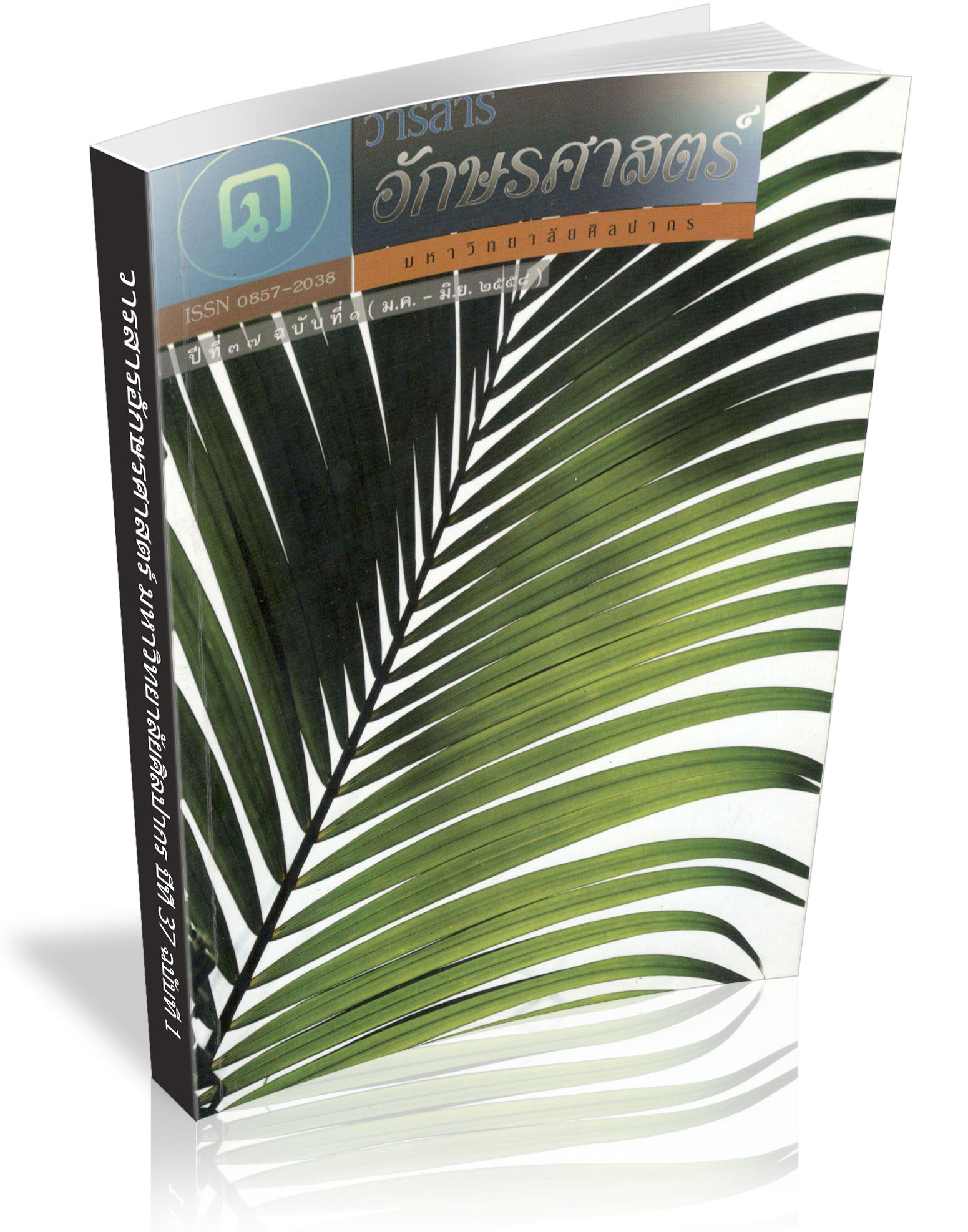Fengshun Hakka Tones Produced by Hakka-Regional Thai Bilingual Speakers
Keywords:
tone, Fengshun Hakka dialect, regional Thai dialect, bilingual speakersAbstract
The objectives of this research is to analyze and compare the characteristics of Fengshun Hakka tones produced by the Hakka-Regional Thai bilingual speakers: Central Thai dialect (Kanchanaburi), Northern Thai dialect (Chiangrai), Northeastern Thai dialect (Khonkaen), and Southern Thai dialect (Suratthani). The data was collected from 12 informants : three informants for each Fengshun Hakka variety. The wordlist consisted of 30 testwords, i.e. five test words for each 6 tones. Each of the informants had to pronounce each test word five times; however, only three of them were selected for analyzing the fundamental frequencies in Hertz with PRANT version 5.3.16, and then converted to semitone. The total number of the test taken to be measured and acoustically analyzed was 1,080. The data on tones in the four Thai dialects was also collected from four speakers to find whether the regional Thai tones influenced the Fengshun Hakka tones or not. With the concept of Gedney's tonebox (1972), a wordlist comprising 20 test words was devised for a comparison between the phonetic characteristics of Fengshun Hakka tones and the regional Thai tones.
The results indicated that every Fengshun Hakka variety had six tones : four tones in smooth syllables and two tones in dead syllables. The tones which have the same phonetic characteristics were the high-falling tone and the mid-falling tone in smooth syllables and the mid-downward gliding tone in dead syllables. However, the pitch height between 0% – 40% of the mid-rising tone in the Fengshun Hakka variety in Khonkaen and low-falling-rising tone in the other varieties are similar to the pitch height of the lowest semitone between 0% - 40% in regional Thai dialects. The rest of the tones looked quite different, so may not be affected by regional Thai dialects.
Downloads
References
ธีระพันธ์ ล. ทองคํา และคณะ. ศัพทานุกรม ๑๕ ภาษาที่พูดในจังหวัดน่าน. รายงานวิจัยฉบับสมบูรณ์ โครงการวิจัยความหลากหลายทางภาษาในจังหวัดน่าน : ความรู้พื้นฐานเพื่อพัฒนาการท่องเที่ยวเฉลิมพระเกียรติสมเด็จพระเทพรัตนราชสุดาฯ สยามบรมราชกุมารี เนื่องในวโรกาสที่ทรงเจริญพระชนมพรรษา ๕๐ พรรษา วันที่ ๒ เมษายน ๒๕๔๘, ๒๕๕๐.
นิทัศกร ชีวเรืองโรจน์. การบรรยายระบบเสียงภาษาจีนฮากกาถิ่นเจียหยางที่พูดในประเทศไทย (A phonological description of Jieyang Hakka dialect as spoken in Thailand). วิทยานิพนธ์ระดับดุษฎีบัณฑิต สถาบันวิจัยภาษาและวัฒนธรรมเพื่อการพัฒนาชนบท มหาวิทยาลัยมหิดล, ๒๕๕๑.
Coughlin, Richard J. Double Identity : The Chinese in Modern Thailand. Bangkok : White Lotus, 2012.
Gao, Ran. “Guangdong Fengshun Kejia fangyan de fenbu ji qi yinyun tezheng (The distribution of the Guangdong Fengshun Hakka dialect and its phonological characteristic).” In Kejia Fangyan Yanjiu (The Research of the Hakka Dialect). Guangdong : Jinan Daxue Chubanshe, 1998. Cited in Wen, Changyan, editor. Kejia Fangyan (The Hakka Dialect). Guangzhou : Huanan Ligong Daxue Chubanshe, 2006.
Gedney, William J. “A checklist for determining tones in Tai dialect.” In Studies in Linguistics in Honor of George L. Trager, edited by M. Estellie Smith, 423–37. Smith, M.E., editor. The Hague : Mouton, 1972.
Downloads
Published
How to Cite
Issue
Section
License
ผู้เขียนบทความต้องยินยอมในข้อกำหนดต่าง ๆ ของวารสารก่อนส่งบทความตีพิมพ์




